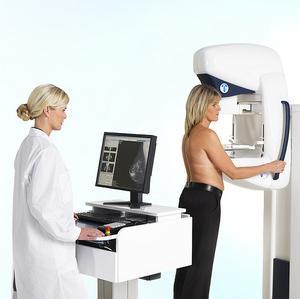Advertisement
DIY Mammogram Math: 1 in 20,000 Odds

Remember that flare-up of The Mammogram Wars? Last November, an independent government panel recommended that women should start getting annual mammograms at age 50 instead of 40, incurring backlash from the breast cancer community and others.
Now, the latest New England Journal of Medicine offers a deeply reasonable article called "Lessons from the Mammography Wars" about how such issues should be handled, including these highly useful stats that might help many of us make our individual mammogram decisions:
For women between the ages of 40 and 49 years, the false positive rate is quite high, and the expected benefits are quite low: more than 1900 women would need to be invited for screening mammography in order to prevent just one death from breast cancer during 11 years of follow-up, at the direct cost of more than 20,000 visits for breast imaging and approximately 2000 false positive mammograms. Conversely, for women between the ages of 60 and 69 years, fewer than 400 women would need to be invited for screening in order to prevent one breast-cancer death during 13 years of follow-up, while accruing approximately 5000 visits and 400 false positive mammograms.6 In short, as the risk of breast cancer increases, the benefits of mammography increase, whereas the relative harms become progressively less significant.
It looked to me as if the bottom line was that for women between 40 and 50, the chances that any single mammogram would save her life were 1 in 20,000. But I never feel confident about my mastery of probability, so I checked with the study's lead author, Dr. Kerianne H. Quanstrum. She replied:
Regarding your question, the short answer is yes, you're exactly right: If average-risk women aged 40-50 are getting a screening mammogram every year, then each individual mammogram has less than a 1 in 20,000 chance of saving a life.
The longer answer is that previous studies have shown that if you perform screening mammograms on women in the 40-50 age range, and follow them over more than 11 years, you'll prevent one breast cancer death for every 1,904 women screened. If you assume that those women are receiving annual mammograms, then that would translate to 1904*11 years=20944 mammograms to prevent one breast cancer death. i.e., One death prevented per 20,944 mammograms; so that each mammogram has less than a 1 in 20,000 chance of preventing a death from breast cancer, exactly as you say.
Advertisement
That is partly because breast cancer is treatable, so that mortality tends to be low; and partly because the incidence of breast cancer is lower in the 40-50 age range compared to 50 years and older.
My personal reaction: Knowing those odds, I think I'd still be willing to undergo the inconvenience and discomfort and possible false positives of a mammogram. But if my insurance company stopped paying for it, I'm by no means sure I'd be willing to pay out of pocket.
The article also notes, rather gently, that some of the medical specialists who argued against the new recommendations might have been, well, just a little, perhaps, interested in making more money?
Although it is true that individual medical providers care deeply about their patients, the guild of health care professionals — including their specialty societies — has a primary responsibility to promote its members’ interests. Now, self-interest is not in itself a bad thing; indeed, it is a force for productivity and efficiency in a well-functioning market. But it is a fool’s dream to expect the guild of any service industry to harness its self-interest and to act according to beneficence alone — to compete on true value when the opportunity to inflate perceived value is readily available.
This program aired on September 10, 2010. The audio for this program is not available.
